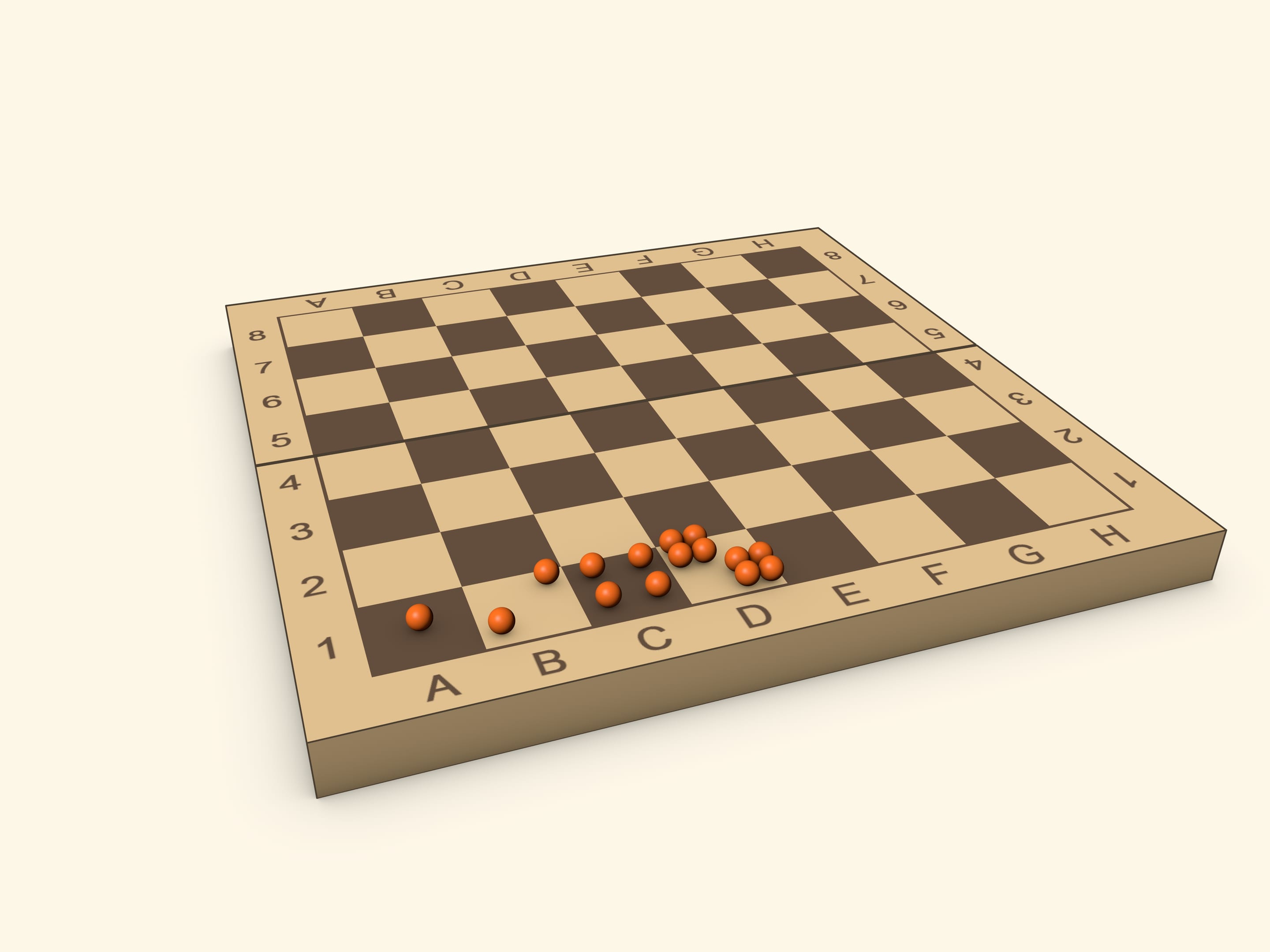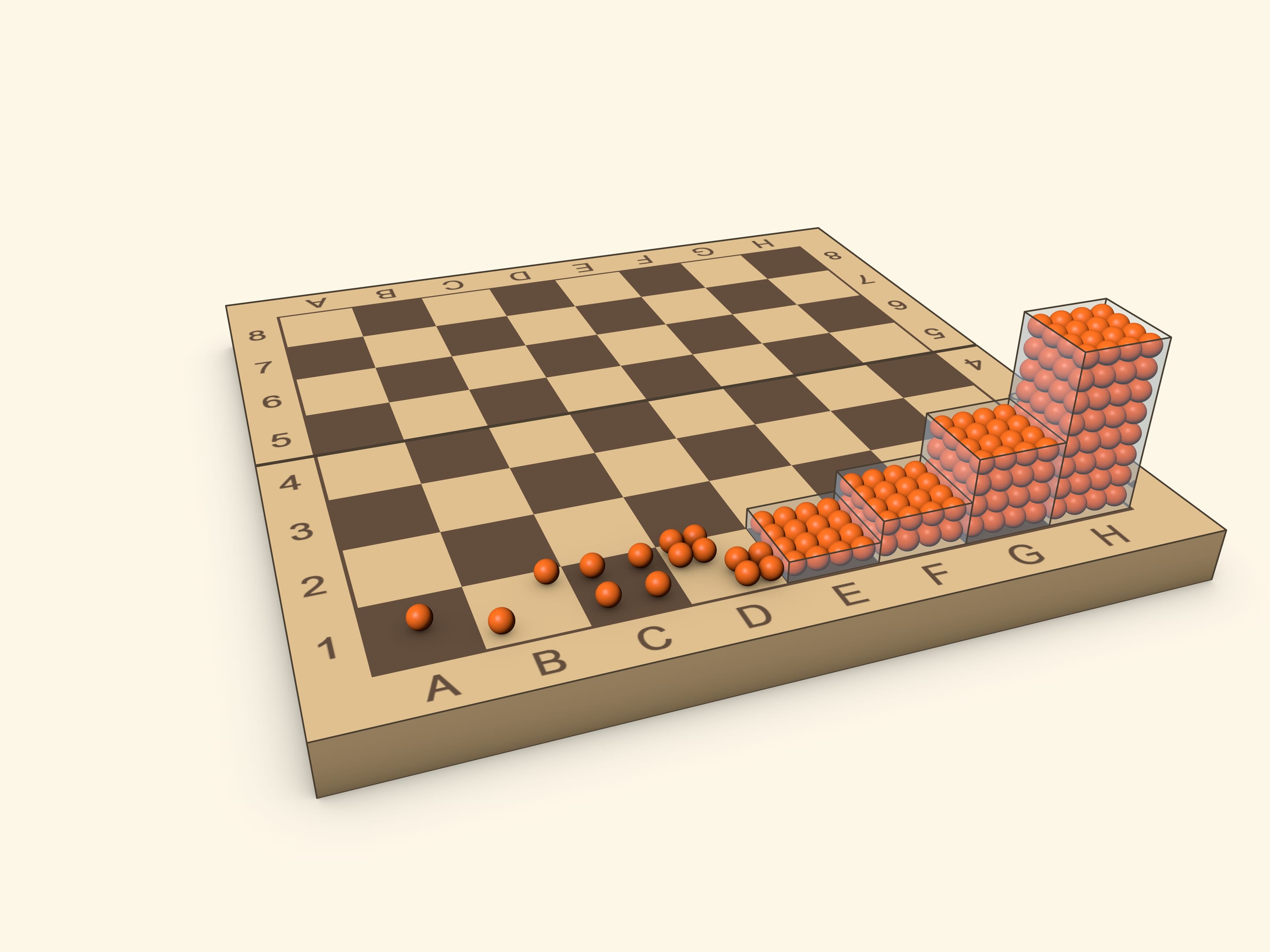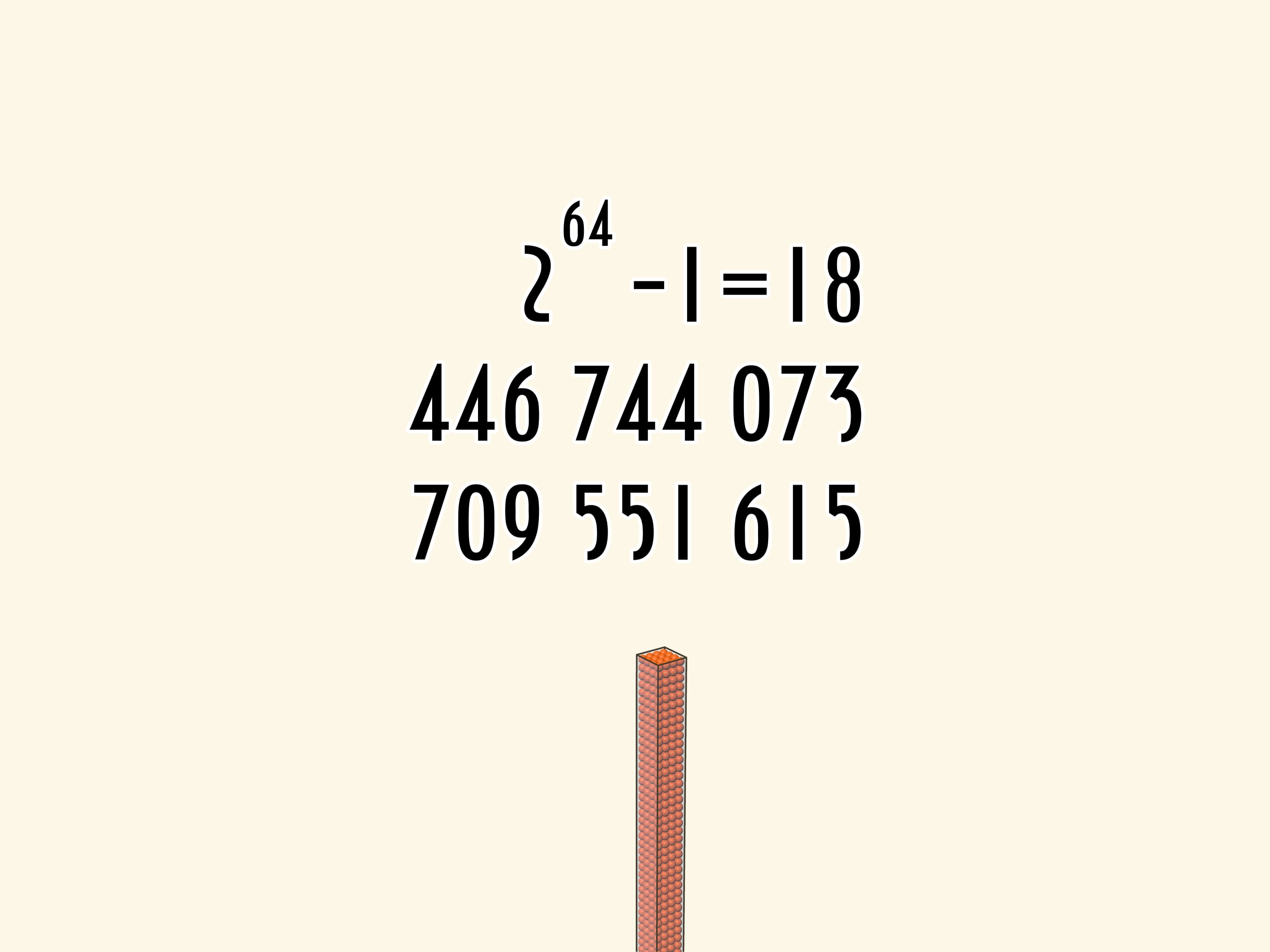The most popular legend about the invention of chess states that once in ancient India a sage by the name of Sessa devised rules of this, by the time, new game and gifted his creation to the king Sheram.
The king was charmed and offered the choice of the reward to the creator of the game himself. Sessa asked the king for a bit of wheat: on the first field of the chess board he asked for 1 grain of wheat to be put, on the second field — 2 grains, on the third — 4, and so on; each following field had to contain exactly twice the amount of wheat than the previous one. The “humble” request turned up to be impossible to fulfill, as the required amount equals the harvest from all Earth for several millenia.
In Europe the legend about the invention of chess arose in the mathematical society in the XVIIth century when John Wallis (who was a mathematician, cryptographer and one of the founders of the London Royal Society) published a translation of a writing by al-Safadi, a Turkic Mamluk historian of the XIVth century.
In the following centuries the story about Sessa and Sheram spread through all of Europe. Even the great Leonard Euler in his book “Elements of Algebra” mentions the problem of estimating the necessary number of grains (in the English translation of Euler’s book the statement begins like this: “One Sessa, an Indian, having first invented the game of chess…”). In Russia there are numerous publications retelling this story, and one of the most famous variants is mentioned in Yakov Perelman’s book “Mathematics can be fun”.











